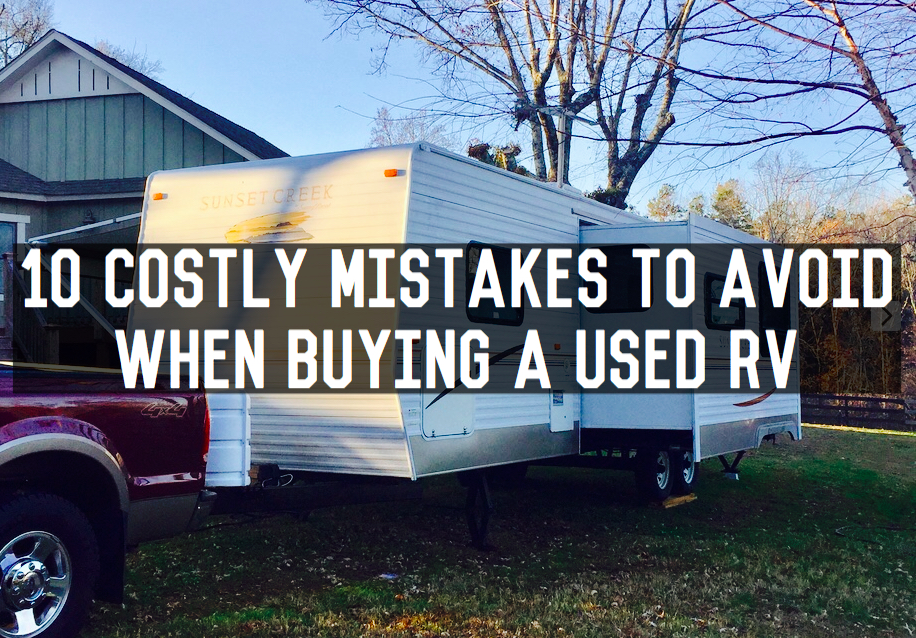
Congratulations, you’re in the market for a used RV! You’re probably a bit overwhelmed by all the different models, brands, and options available. Buying used can be a very frustrating process. There can be months of scanning multiple online sites, visiting dealers, driving hundreds of miles every weekend only to find out the RV has already sold or is misrepresented. I hope this post helps you find the perfect RV. You’ll be able to share generations of memories and experiences unlike no other. However, if you buy the wrong RV or overlook these 10 points, you could be on a path to frustration, financial trouble or disaster!
- ROOF LEAKS – If the RV you are considering is more than four years old and has been stored outside, chances are it had some form of water intrusion and subsequent water damage. What you’ll find is that many owners (including dealers) will either be ignorant as to the extent of the damage or they will try to hide it from you. The worst case scenario is they will “fix” the leak cosmetically without removing rot, wet insulation, mold, etc. These conditions not only attract bugs and reduce the value of your RV, but they can also make your family sick. Click the following link for some basic guidelines for inspecting an RV for potential leaks– 8 Tips for Inspecting the Roof on a Used RV.
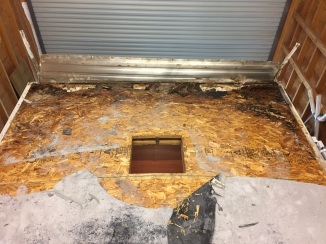
- DELAMINATION -Delamination on the fiberglass siding of a RV is a huge problem in the industry. When I was working as a service tech over half of the fiberglass trailers that came through our shop had some form of delamination and many of them were severe. Despite what you read on manufacture forums, the leading cause of delamination is moisture. It can be extremely expensive. My advice, if you see a RV for sale that has any delamination, don’t buy it. It’s for this reason that I’m a big believer that metal side RVs shouldn’t be overlooked. They aren’t as sexy, but they can be much easier and cheaper to repair.
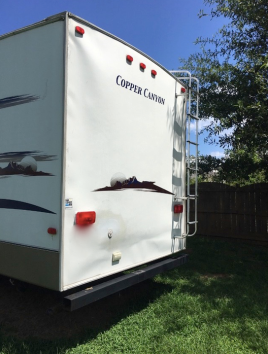
- BUYING A RV THAT HASN’T BEEN STORED UNDER SHELTER – I personally would only consider used RVs that were kept in covered storage (with the exception of metal roofs or airstreams). Vinyl covers and tarps do not always count. These covers lock in moisture and heat and often times do more damage than good. I realize this is hard to find, but be patient! You’ll be very glad you waited for the right one.
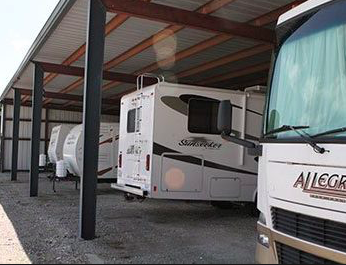
- WOOD CONSTRUCTION RVs – I’m sure I may take some heat for this because there are a lot of owners that love their wood construction RV. Although they are cheaper to purchase, they are also built cheaper, heavier, and require more labor to fix if you get a water leak. They don’t hold their value and traditionally don’t have the same longevity as an aluminum superstructure. Many wood construction RVs built in early to mid 2000’s didn’t even last as long as the purchaser’s loan payments! I realize this is a generalization and may not be true for every case and brand. It is something to consider if you need to narrow down your choices. Beware many aluminum superstructure manufacturers still use wooden roof trusses. Make sure the roof is solid and well maintained!
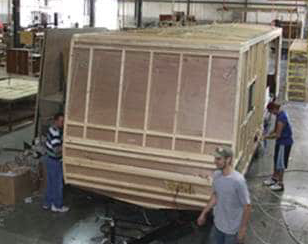
- PURCHASING A BRAND THAT IS NO LONGER IN BUSINESS -After the recession of 07-09′ the RV industry entered a complete death spiral. A ton of brands went under leaving owners out of luck with warranty and parts. Beware when shopping used as this may or may not be a big deal. For a recreational vehicle with mostly common parts, I wouldn’t worry too much. For example, if you buy a used Coleman pop-up with an ABS roof and a manufacture-specific part breaks or the roof splits, you’ll likely be selling for scrap metal. Do your research and get a feel for part availability before you buy. Just know that warranties aren’t going to be transferred or honored and you might have to pay to have parts custom made. Most travel trailers do have common appliances, but many slide out parts and exterior and interior trim pieces are manufacture specific. For this reason, the best advice is to stick with solid brands with good part availability.

- BUYING A RV THAT HAS BEEN LIVED IN – If you can tell from an advertisement that the RV in question is being lived in. I think it’s more common than not that you should walk away. Unless you find a perfectly restored airstream or fancy glamper that someone has babied while living the tiny life, you should probably move on. Many RVs are purchased by construction companies for workers to live on job sites, FEMA housing, or just people looking to save some money on rent. While I’m not bashing these decisions, activities, or people in any way, you will likely find that RVs in these situations live a very hard life and suffer the highest level of neglect.
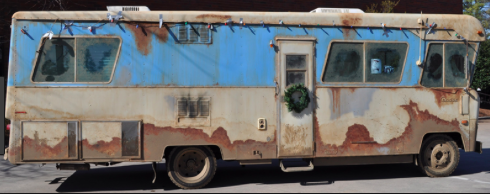
- NO PRIOR MAINTENANCE RECORDS OR WINTERIZATION HISTORY – If you ask a seller who maintained the RV and their winterization strategy and they don’t have a good answer, chances are high they’ve done little to preserve the asset. These types of questions will give you good insight as to how the RV has been taken care of. Failure to winterize an RV can lead to significant plumbing damage. It’s not uncommon for the owner to do this him/herself. Just make sure they have.
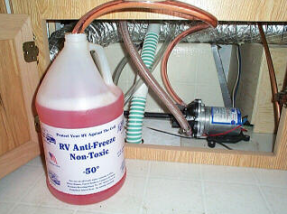
- MISUNDERSTANDING VALUE AND NADA GUIDES – Knowing the true value of a RV is a significant part of the negotiation process. Most sellers seem completely ignorant not only to the true value of their RV, but most are unwilling to accept the fact that their five year old RV has depreciated 40-50%. Often times sellers are looking to sell at payoff, which unfortunately is much higher than the actual value. For this reason, do your homework. The number 1 mistake I see online is sellers that don’t know how to use NADA. NADA is the gold standard for RV appraisal however; it’s a bit antiquated and can be confusing. Specifically, sellers will check options boxes in the evaluation process even though they are standard options. These boxes should only be checked if you are including after-market additions such as a slide-topper, updated style awning, or additional equipment installed after RV purchase/manufacture. Making this mistake will inflate the appraisal by 20-30%. The best thing you can do is to create your own report and ask the seller why they’ve added items that were standard. Most sellers will get upset at first, but thank you later for showing them.
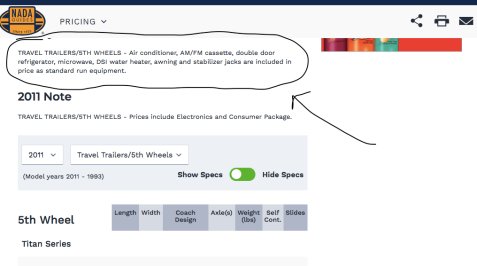
- PEAK SEASON PURCHASE –The most popular time to purchase a RV is between March and October. There are a few lulls, especially during August and September, but for the most part spring – fall are crazy times to buy. If you can wait and buy during off-season, you’ll find better deals and much lower pressure. During the busy months it’s not uncommon for sellers of well-cared for RVs to sell above market value in a matter of hours. It’s also not uncommon for buyers to overpay for junk!
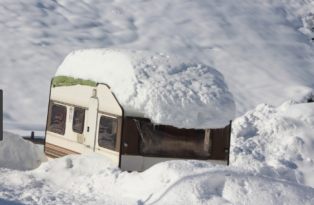
- NO TITLE – If a seller tries to tell you that your state doesn’t require a title for a RV, don’t take their word for it. Call your local tag office and ask what the rules are for your state. Chances are high that you will need a title before you can get a tag. Not having a title on a modern-era RV should be a red flag. You can probably get a replacement, but the hassle and red-tape will be excruciating. Be sure to ask this question prior to looking at a camper.
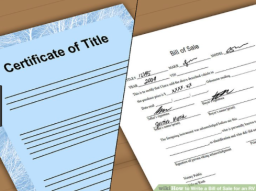
 Final tips! Before going to look at a used RV, do yourself a favor and create a checklist of items that you want to inspect prior to making a deal. Have the seller hook the RV up to power and water and do a complete inspection of every item. If something doesn’t work, get an estimate and negotiate a lower price or make the repair contingent on purchase. The major items to inspect are roof quality and condition, leaks, delamination (if fiberglass), appliances (furnace, water heater), awning, slide outs, and water/electric, and gas. It’s very easy to get distracted during your visit and miss major items. However, if you don’t make a checklist and wait to make an offer prior to seeing all the items in working condition, you might regret it later. Check back soon for a printable checklist!
Final tips! Before going to look at a used RV, do yourself a favor and create a checklist of items that you want to inspect prior to making a deal. Have the seller hook the RV up to power and water and do a complete inspection of every item. If something doesn’t work, get an estimate and negotiate a lower price or make the repair contingent on purchase. The major items to inspect are roof quality and condition, leaks, delamination (if fiberglass), appliances (furnace, water heater), awning, slide outs, and water/electric, and gas. It’s very easy to get distracted during your visit and miss major items. However, if you don’t make a checklist and wait to make an offer prior to seeing all the items in working condition, you might regret it later. Check back soon for a printable checklist!
Happy camping!
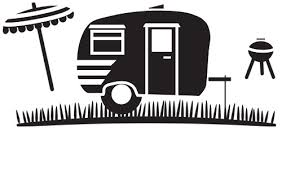

You stated that metal RVs are better than fiberglass but I read most metal RVs have wooden frames. Does having a metal body in your opinion positively outweigh the risk that comes with a wooden frame?
LikeLike
Great question!! After 2000-2002, many brands with aluminum structure actually offered the option between metal siding or fiberglass. Our 2005 is an aluminum superstructure with metal siding. That said, metal is a personal preference of mine and not necessarily the right choice for everyone. Definitely make sure that the structure is aluminum and not wood. Wood structure RV’s often times don’t even last as long as their payments. As far as choosing between metal siding and fiberglass, both have their advantages, you just have to choose what is right for you. If you go with fiberglass, just make sure to avoid anything with delamimation.
LikeLike